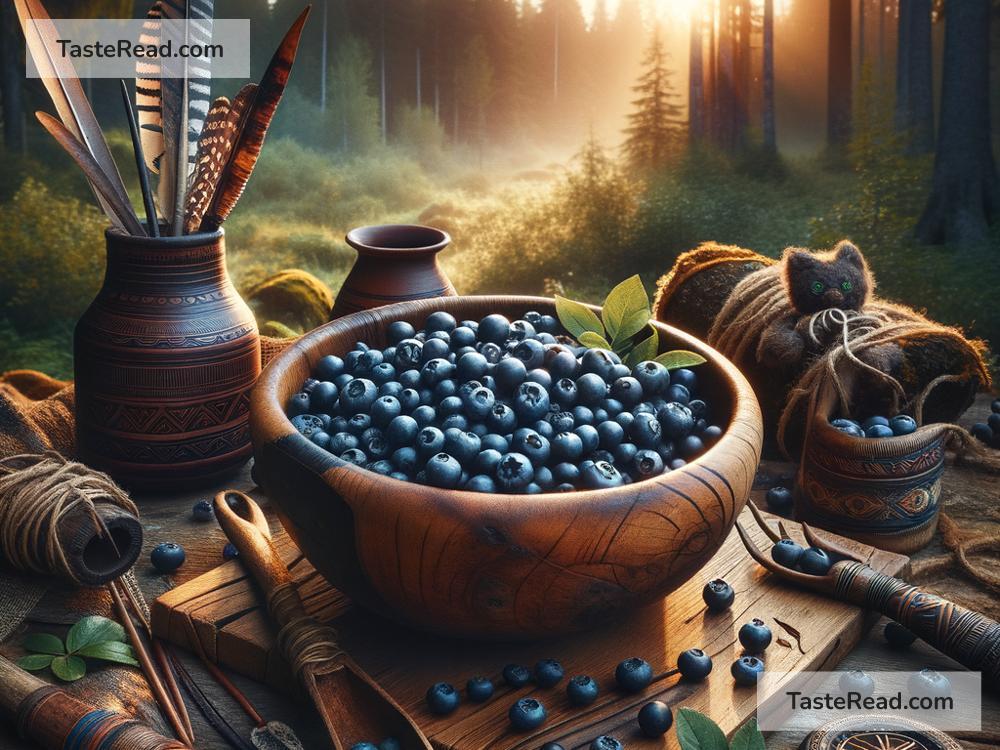The Fascinating History of Blueberries in Native American Diets
Blueberries are small, round, and sweet fruits that many of us enjoy in smoothies, pies, and snacks. But did you know that they have an incredible history, especially in Native American cultures? Long before blueberries became popular worldwide, Native Americans treasured these berries for their nutritional value, medicinal uses, and cultural significance. Let’s explore the fascinating story of blueberries and how they played a vital role in Native American diets.
Ancient Superfood
Historians believe that blueberries have been growing in North America for thousands of years. These wild berries thrived in forests, fields, and marshy areas, making them easy to find and harvest. Native American communities quickly recognized their value and made blueberries a staple in their diets.
One reason blueberries were so important is their impressive nutritional content. Packed with vitamins like C and K, along with antioxidants, these berries helped keep people healthy. They were especially important during the warmer months when fresh fruits were available. Native Americans also dried blueberries to preserve them for winter, ensuring they had food even during harsh conditions.
Blueberries as Medicine
Blueberries weren’t just food—they were also considered medicine. Native Americans used blueberries to treat various ailments and maintain good health. For example, the roots of the blueberry plant were brewed into teas to help with stomach problems. The berries themselves were believed to improve digestion and provide energy.
One group of Native Americans, the Wabanaki people from northeastern North America, passed down stories of the blueberry’s healing powers. They considered blueberries a gift from the “Great Spirit” and would share them with anyone who was sick or weak. Even today, modern studies show that blueberries have health benefits, such as improving heart health and boosting brain function.
Cultural and Spiritual Importance
Blueberries had special meaning beyond their practical uses. For many Native American tribes, blueberries were linked to spiritual beliefs and cultural traditions. They often appeared in ceremonies, stories, and symbols that connected people to nature and the land.
In Native American creation stories, blueberries sometimes symbolize harmony and balance. Their vibrant blue color was associated with the sky, rivers, and the interconnectedness of life. The berries reminded people to respect the earth and appreciate its gifts.
While blueberries were an everyday food, they were also a treasure—a reminder of the abundance provided by the land. Tribes celebrated the harvest season, giving thanks for the fruits that sustained their communities.
A Key Ingredient in Traditional Recipes
Native Americans were skilled at turning blueberries into delicious and practical meals. They often mixed dried blueberries with other foods to create long-lasting dishes, especially when they needed energy for hunting or traveling.
One popular blueberry-based recipe was called “pemmican,” a mixture of dried meat, fat, and berries. Pemmican was lightweight and packed with nutrients, making it an ideal food for journeys. Blueberries added flavor and sweetness, making pemmican more enjoyable to eat.
Beyond pemmican, blueberries were used in soups, stews, and baked goods. Native Americans cooked creatively with whatever ingredients they had around them, combining berries with nuts, seeds, and grains that were locally available. This helped create a varied, healthy diet.
Sharing Blueberries with the World
When European settlers arrived in North America, they noticed how Native Americans used blueberries. The settlers learned to harvest and preserve the berries, and eventually began incorporating them into their own cooking.
Blueberries became popular in colonial recipes like jams, cobblers, and muffins. As the settlers expanded their farms and towns, they started cultivating blueberries in larger quantities. Over time, the berry’s fame grew, eventually spreading far beyond North America to become a beloved fruit worldwide.
Native Americans’ knowledge of blueberries was invaluable in teaching settlers how to survive in unfamiliar lands. By sharing the berries and their uses, they demonstrated the importance of living in harmony with nature—a lesson that remains relevant today.
The Role of Blueberries in Modern Times
Today, blueberries are considered a “superfood” for their many health benefits. Scientists and dietitians recommend eating them to fight diseases, improve immunity, and stay strong. But while blueberries are now a trendy health food, they still connect us to the past.
Many Native American tribes continue to honor the cultural and spiritual significance of blueberries. Harvesting wild berries is still a tradition for some families, passed down through the generations. Modern recipes inspired by Native American cooking—like blueberry soups, jams, and dried berry snacks—keep the history alive.
By learning about blueberries and their role in Native American diets, we gain a deeper respect for the people who first cultivated and appreciated this remarkable fruit. Their resourcefulness and love for the land remind us to approach food not just as something we eat, but as a gift to cherish and protect.
Conclusion
The next time you enjoy blueberries in your breakfast or dessert, take a moment to reflect on their rich history. These little berries have a big story, tied to the resilience, wisdom, and traditions of Native Americans. Their use of blueberries shows how nature provides everything we need, and how working with the land can create a sustainable, healthy way of life. Blueberries are more than just fruit—they are a connection to history, culture, and the earth itself.


